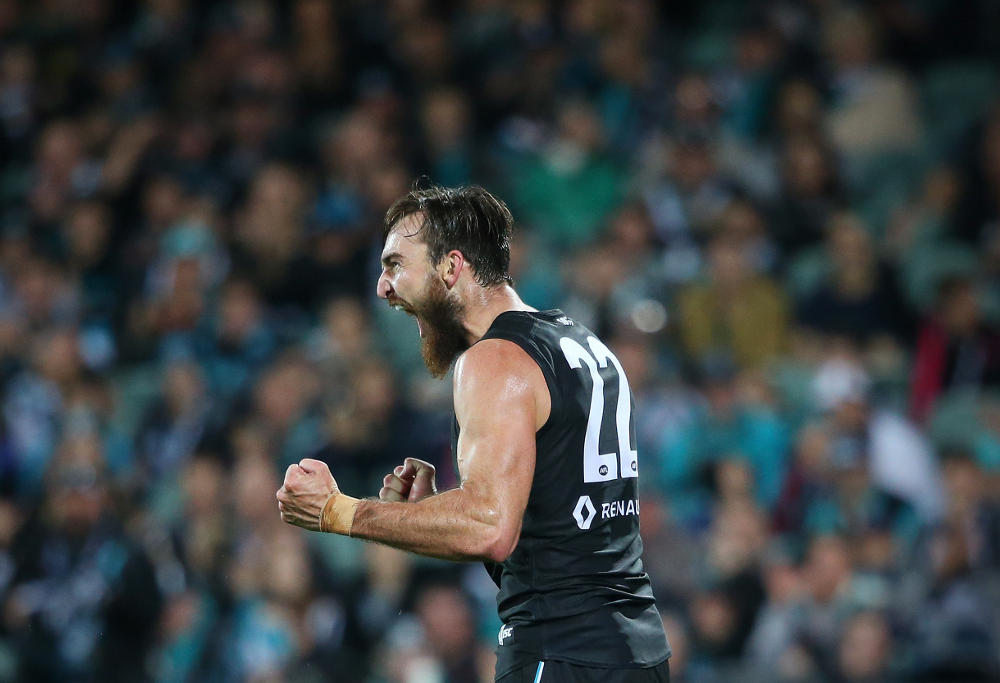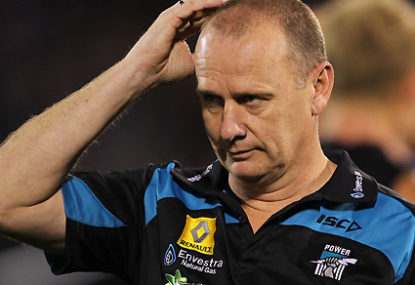The AFL offseason has the ability to make or break a club’s on-field fortunes. A good off-season can set a club up for success and attract new members and sponsors, while a failure to perform can have the opposite effect.
Each season is such a whirlwind of non-stop action that there is rarely time to draw breath; it is so easy to get caught up in the action of the season without thought of the future. The off-season provides a chance for clubs and fans alike to reset and take stock of where their club is going.
To build a brand and sell hope, clubs need to take a plan into the off-season; fans want to see that their club has a concrete plan for building the list. This usually involves either investing in the draft or topping up the list through the trade and free agency period, depending on the club’s list profile and ladder position.
Having a clear strategy allows the club to sell this to their fans, either building hope that the club is primed for finals and a premiership tilt, or asking for patience while the club attempts to lift itself off the lower rungs of the ladder. Put simply, a club’s on-field direction and expectations for the following season are driven largely by its strategy during the off-season.
While clubs like Melbourne and the Bulldogs are examples of successive successful off-seasons building optimism and good fortunes on the field, Port Adelaide is the best example of how mixed messages in the off-season can have an impact on on-field fortunes.
After going from competition basket-case in 2010 and 2011 to a whisker away from a grand final in 2013 and 2014, the Power have stagnated on-field in the past two seasons, frustrating fans with their obvious talent, but lack of consistent effort and endeavour. Like every team, they had injury concerns and sorely missed Paddy Ryder during his season-long suspension, but their on-field malaise seems to have been driven largely by their lack of a clear strategy in the past few off-seasons.
In 2013 and 2014, the club’s strategy was evident: forgo the draft in favour of bringing in experienced players to drive the team towards a premiership. In 2013, this included Matt White from Richmond and Jared Polec from Brisbane, while they brought in Paddy Ryder in 2014. This was the right strategy at the time, as the team was in a finals window. However, after two seasons of agonising near-misses, losing the 2014 preliminary final to Hawthorn by three points, the team’s strategy has become muddled and confusing.
Port’s charge to the finals in those two years was driven as much by improvement from their younger and depth players as it was from their trade period additions. When the team’s form dropped off slightly in 2015, it was due in large part to experienced players having below-par seasons, while there was less improvement from the depth players on their list. While there was a clear need for more forward firepower, Port’s list management team assessed that there was no need to make too many wholesale changes, with the list in pretty good shape, and largely still composed of the same group that had taken the team to the finals.
This was the message promoted by coach Ken Hinkley and list manager Jason Cripps during the 2015 off season; the club added Charlie Dixon from Gold Coast to address their lack of a key forward, but otherwise the public dialogue was that the team was still in a good place. This was reflected in the club’s decision to sign several players, such as midfielder Hamish Hartlett, Robbie Gray and Jackson Trengove, to long-term deals to ensure that their key players were around to drive the club’s push to finals. More than anything, this reflected the faith the club put in its players and their ability to deliver.
Having traded Dixon in, Port’s didn’t enter the draft until pick 56, and used their late picks to add depth to their position stocks. Despite this, there was public consternation by Port fans and industry pundits that the team had overestimated its list, and trading itself out of the draft was the wrong decision.

When a club publicly backs in its list, the onus is then on the team to deliver. Port’s dismal 2016 fell well short of this, finishing 10th on the ladder. Recognising, belatedly, that the list requires more depth to compete with the top echelon of the AFL, the club hierarchy used the 2016 trade period to change tack, deciding to try and maximise its draft hand rather than trading players in.
However, the decision of 12 months earlier to commit to its players backfired when, searching to gain a better draft position, the club tried to offer up its contracted stars for trade. Hartlett, in particular, was shopped around against his will, with the club relying on him leaving to net them more early draft picks.
His decision to stay at the club to which he had committed to long-term only the year – despite lucrative deals from other clubs – before stymied the club’s intentions, and has sent mixed messages to frustrated fans.
For the first half of the trade period, the club tried strongly to shop around contracted players. However, when no interest was forthcoming or players expressed their opposition to being traded, the club’s public message was that it was backing in its list for 2017. This is a confusing about-face from the team, and creates an atmosphere of negativity both within the team and among fans.
This was further exacerbated during the trade period when Port was involved in a number of dubious pick swaps, the first with Gold Coast and Brisbane where Port gave up its first-round pick in 2017 in return for late first and second round picks in 2016, and the second with Sydney where they swapped their pick 9 for picks 14, 17 and an improvement to their later picks.
While their improved draft hand in 2016 is a positive reflection of the club’s public messaging, on face value its decision to trade out of the first round in 2017 does not seem to be a well-thought out strategy for a club looking to rebuild its list through the draft.
Of course the club may be able to add another first round selection next year through trading, but given the current state of their player contracts, it’s not a fait accompli that the club will be able to achieve this.
In recent years, clubs who have had the most success in rebuilding their list through the draft have had a clear, well-considered strategy which has included maximising their draft hand over multiple years, not a knee-jerk reaction to the previous season’s results.
Having a good draft hand is also no guarantee that a team will make the right selections, so having a number of early selections over several years maximises the chances of success should some selections be a failure.
Port heads into 2017 in the dreaded ‘no man’s land’ of AFL football – with enough good talent to push the best teams, but not enough to play well on a consistent basis. Failure in 2017 will mean some interesting and hard list decisions at the end of the season, with the club having to decide whether its current crop of core players is going to be around for the next finals tilt.
More than this, however, the club needs to develop a long-term list management strategy going forward. It’s fair enough that Port made the decision to top-up rather than go to the draft in 2013 and 2014. However, the lack of long term list management strategy has not been confined to the past few seasons – the bald facts are that this is a team that has not had a first round draft pick since Ollie Wines in 2012, and has not had multiple early picks since 2008.
This is a damning indictment for a team that has played finals only twice in the past nine seasons, and speaks volumes about the systemic misjudgment of both the ability of the playing list and players drafted over that period (only 11 players drafted between 2008-2012 remain on the club’s list). Without a clearly identified strategy, Port risks being consigned to no-man’s land, mediocrity and irrelevance for the foreseeable future.






























































































